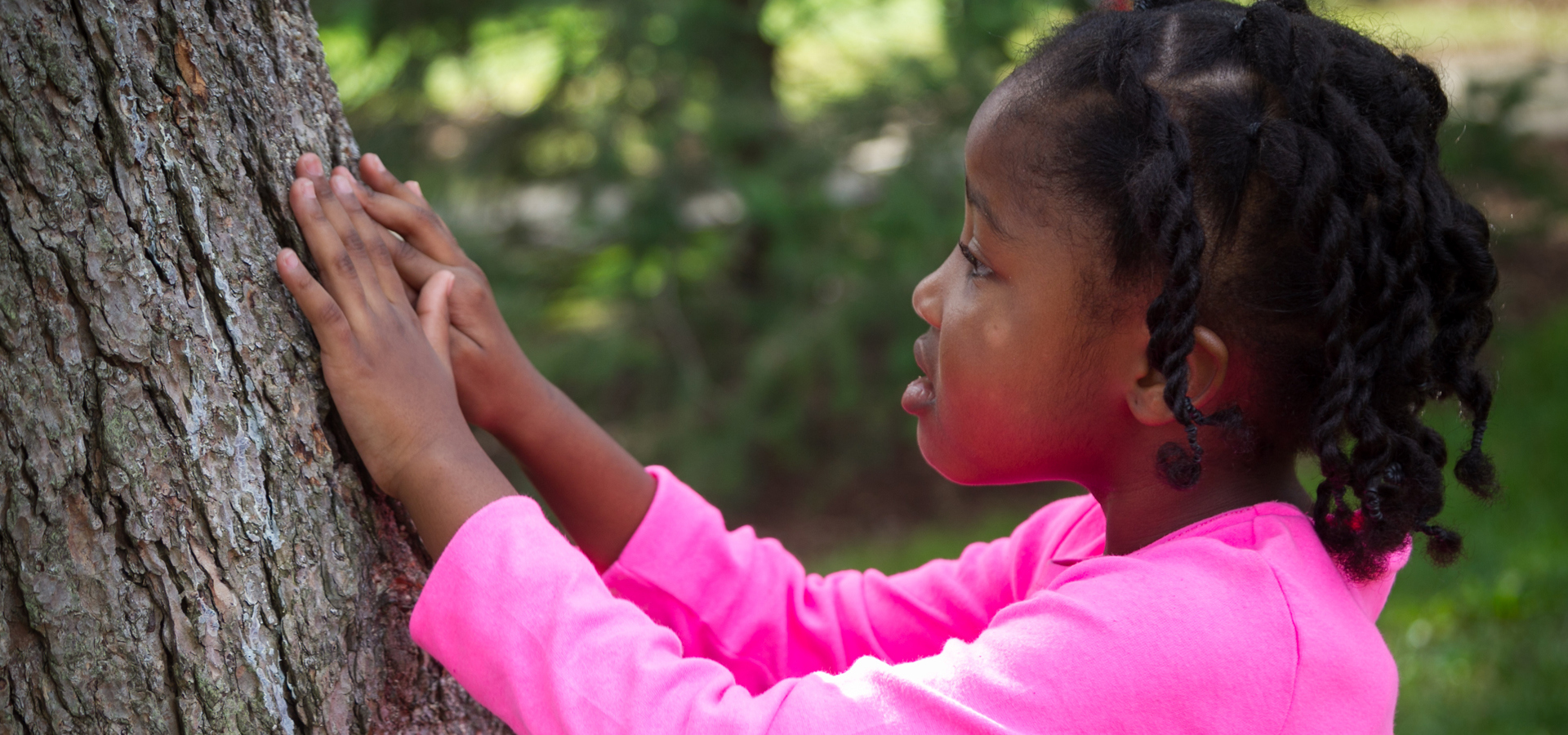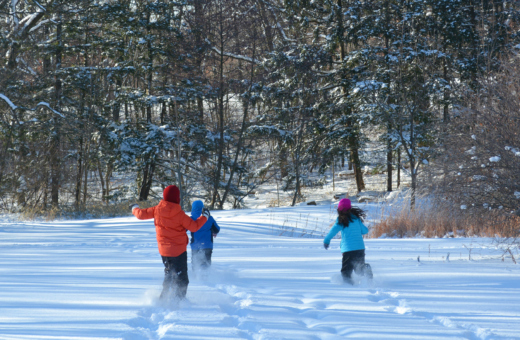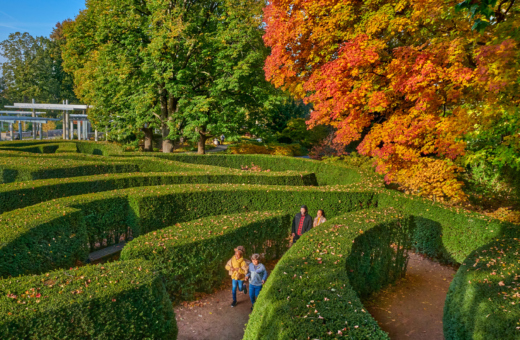Blog Post
August 3, 2021
The Children’s Garden Staff
Connecting Children to Trees and Nature
Connecting children to nature supports their emotional and physical development, nurtures their creativity and imagination, and reduces anxiety. Try these sensory activities with the children in your life, strengthening their senses to tune into and explore the wonderful world of trees.
Touch
Touch, hug, or climb a tree (make sure it is allowed first). Get close to a tree that you’ve only noticed from a distance before. Feel the texture of its bark, the coolness of its trunk, the weight of its limbs. Is the bark smooth or bumpy? What colors can you see? Stand under the tree and look up. Stay in that moment and take in the physical presence of the tree. Look at the sunlight playing through the leaves. Deeply breathe in the tree’s gift of oxygen.
See
Draw a tree. Decide if you’re going to draw the whole tree (viewed from a distance) or just part of the tree (a leaf, flower, seed, or branch). Drawing helps us see and remember more. Slowing down and focusing on what you draw allows you to notice things you’ve never seen before, even though you may have passed that tree on your way to school or to the park every day. The next time you walk by that same tree, you will recognize it as an old friend.
Hear
Cup your hands around your ears to listen for sounds coming from one or more trees. This works best in the mornings before the heat of the midday sun slows down many animals’ activities. Insects, birds, and squirrels all make their homes in trees. They depend on trees for food and shelter, and the trees depend on them for pollination and reproduction.Sit quietly for a few moments and listen for flutterings, buzzings, chirpings, or other sounds. Think about how plants and animals depend on each other, and how you are part of that same community of life.
Smell
Stand near a group of trees and take a few slow breaths. What scents do you notice? Now change your direction and close your eyes as you breathe in and out. Do you notice any different scents? If there are pine trees or other conifers around, pick up a pine cone or gather some pine needles in your hand. Scrape their surface and, as you sniff, close your eyes and focus on the aromas given off by the tree. Breathe in and out and notice how the trees, the plants, the earth, and all of its inhabitants are connected through the life-giving exchange of air.
Taste
Summer is the perfect time to taste and celebrate the sweet gifts of trees. In the Midwest, apples, mulberries, tart cherries, and even some varieties of peaches and plums ripen in the summer. Check the Arboretum’s Sterling Morton Library or your local library for books such as Pie in the Sky, by Lois Ehlert, to learn where cherries come from and then bake your own cherry pie following the directions in the book.
Create
After your sensory explorations, create a piece of art using a variety of natural materials that have fallen from trees, such as twigs, leaves, cones, flowers, or seeds. Collect a few things to create either a representation of a tree or an artistic arrangement you would like to give to a tree in appreciation of everything the tree gives us.
Enjoy these activities at any time, anywhere, or join other families on a guided sensory exploration of the Arboretum by signing up for Five Senses Woodland Family Walks.
For more of the Arboretum’s educational opportunities for children, see Children and Family Programs.



